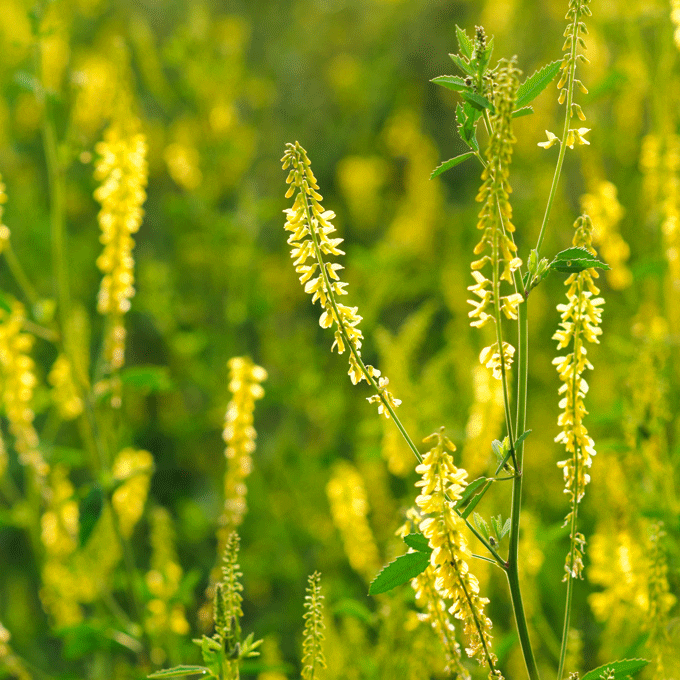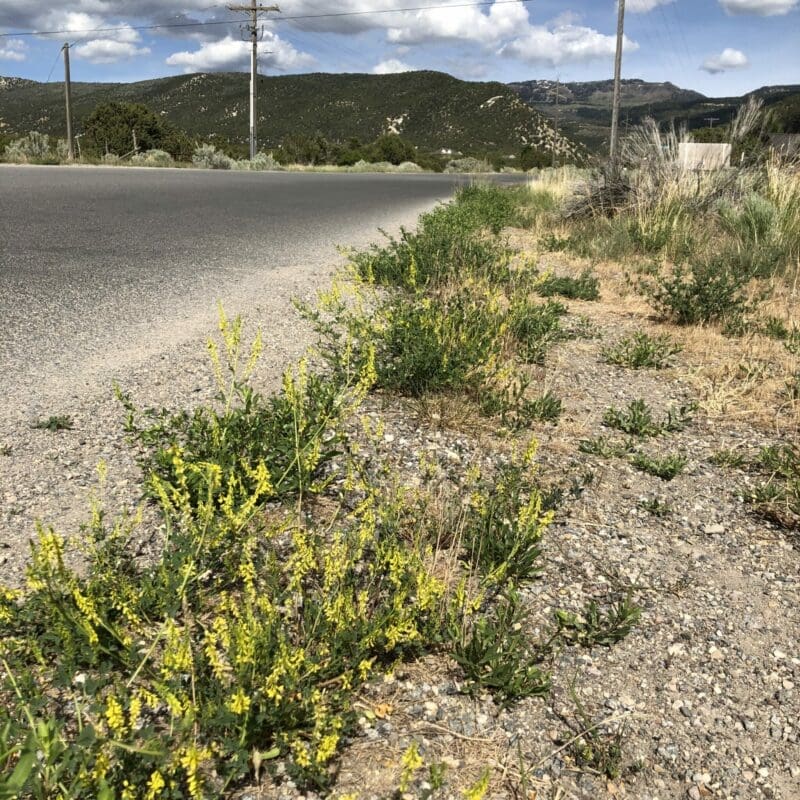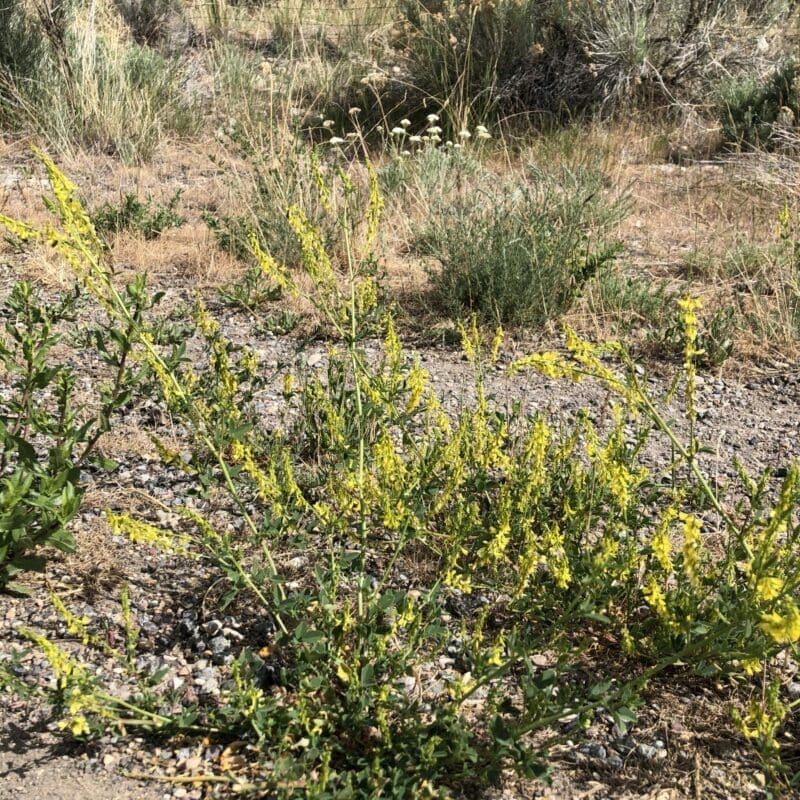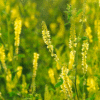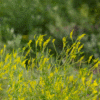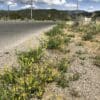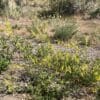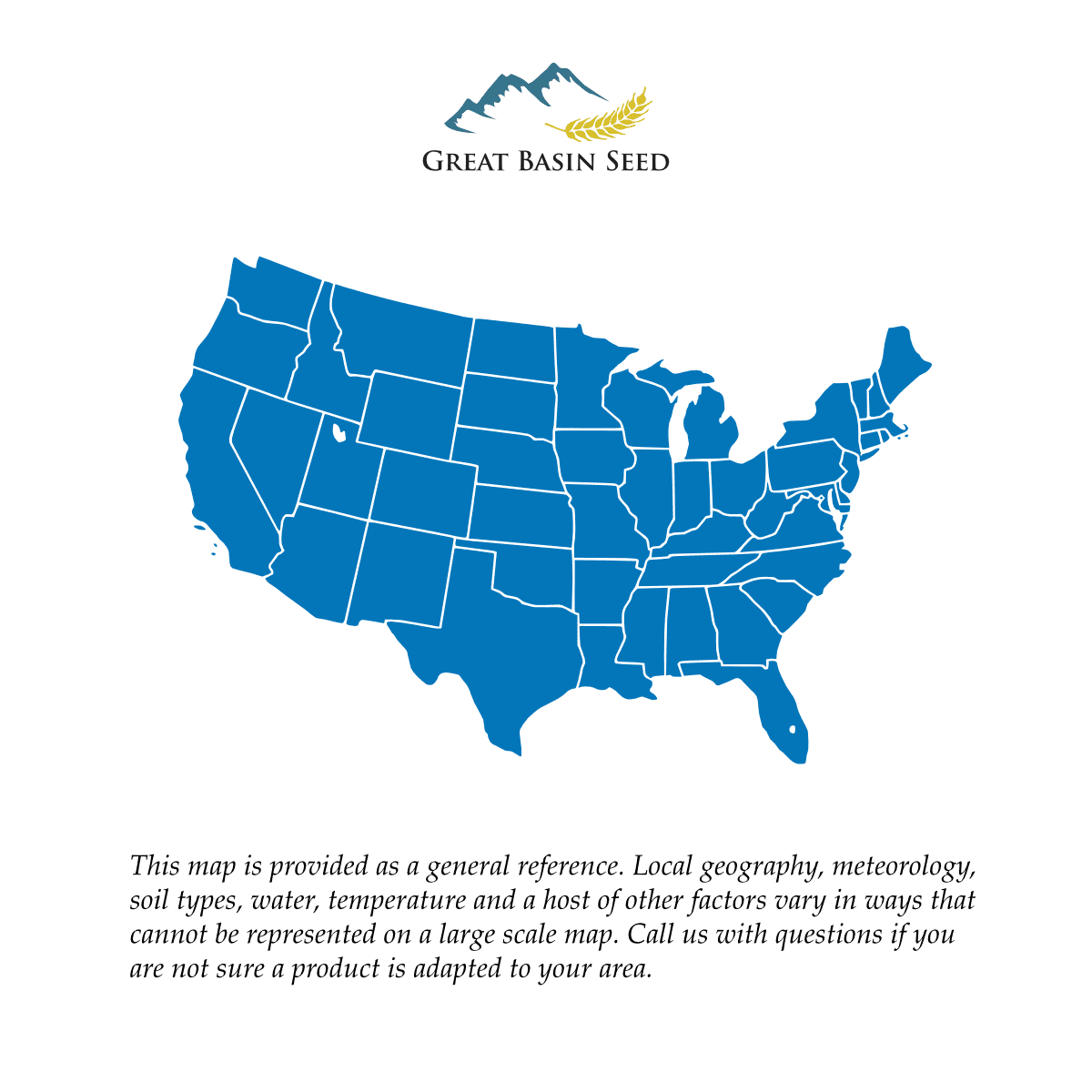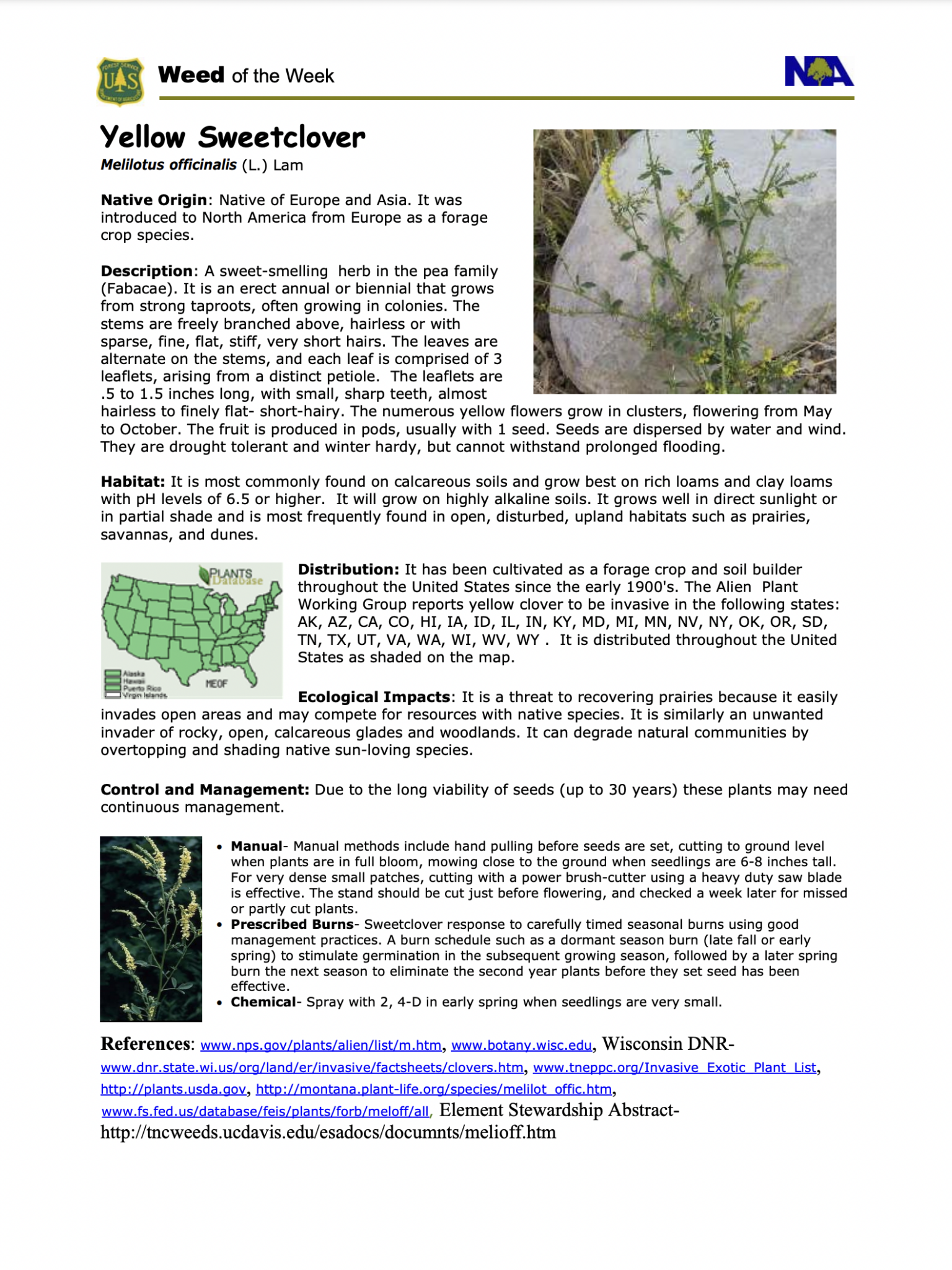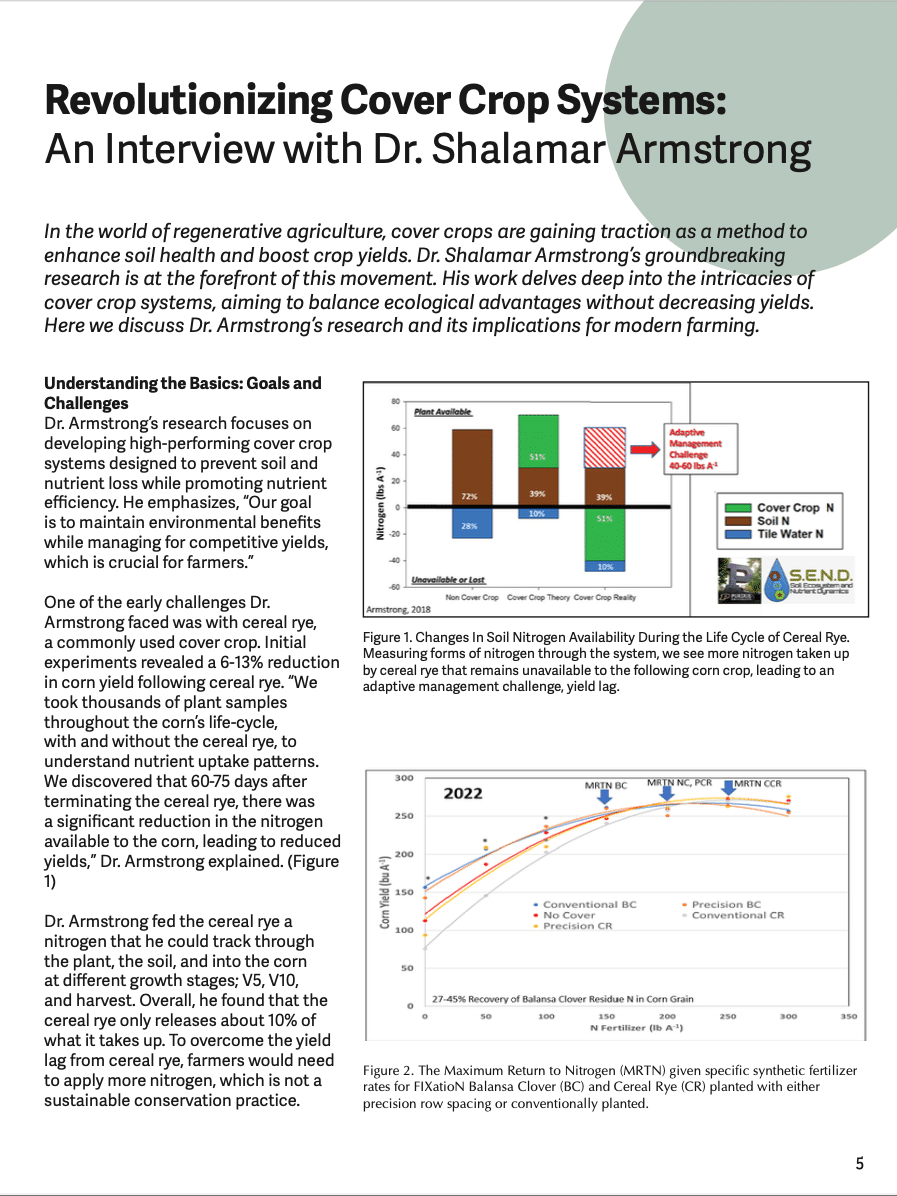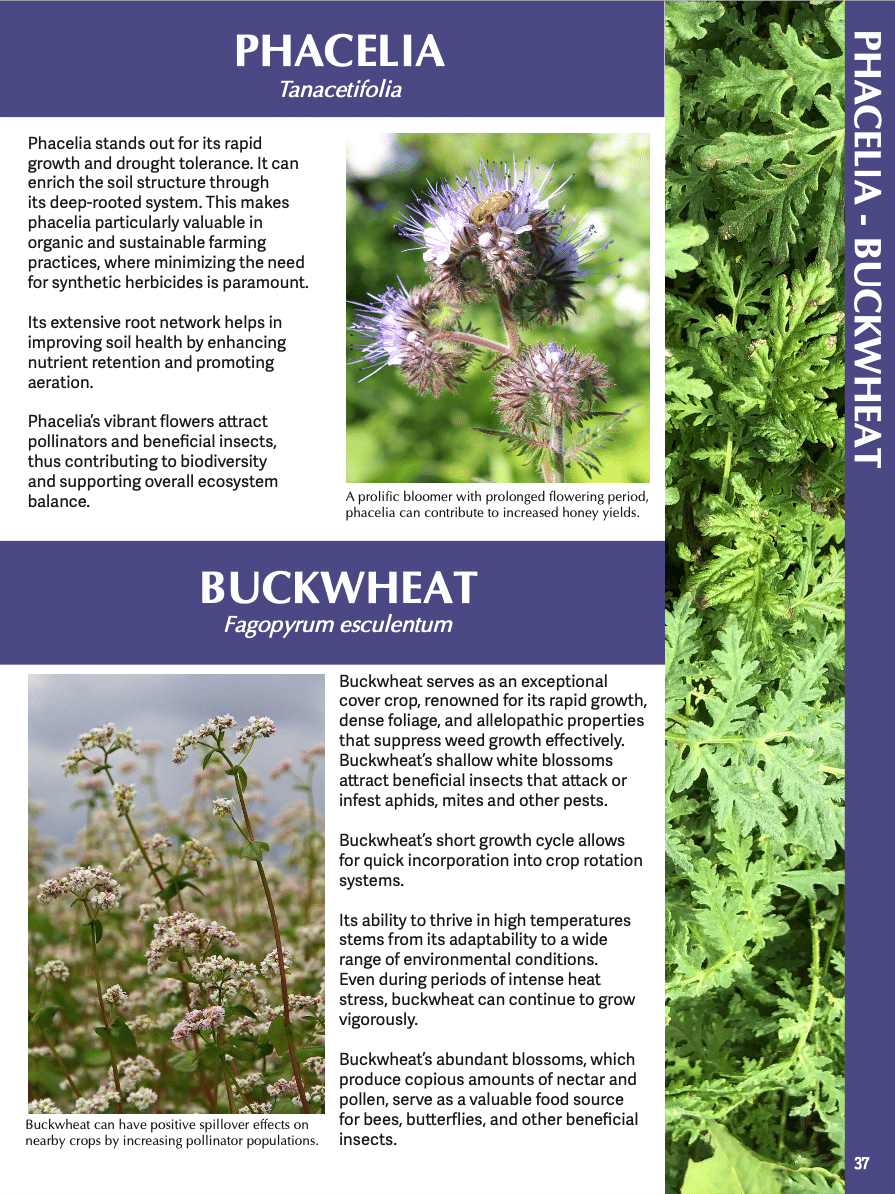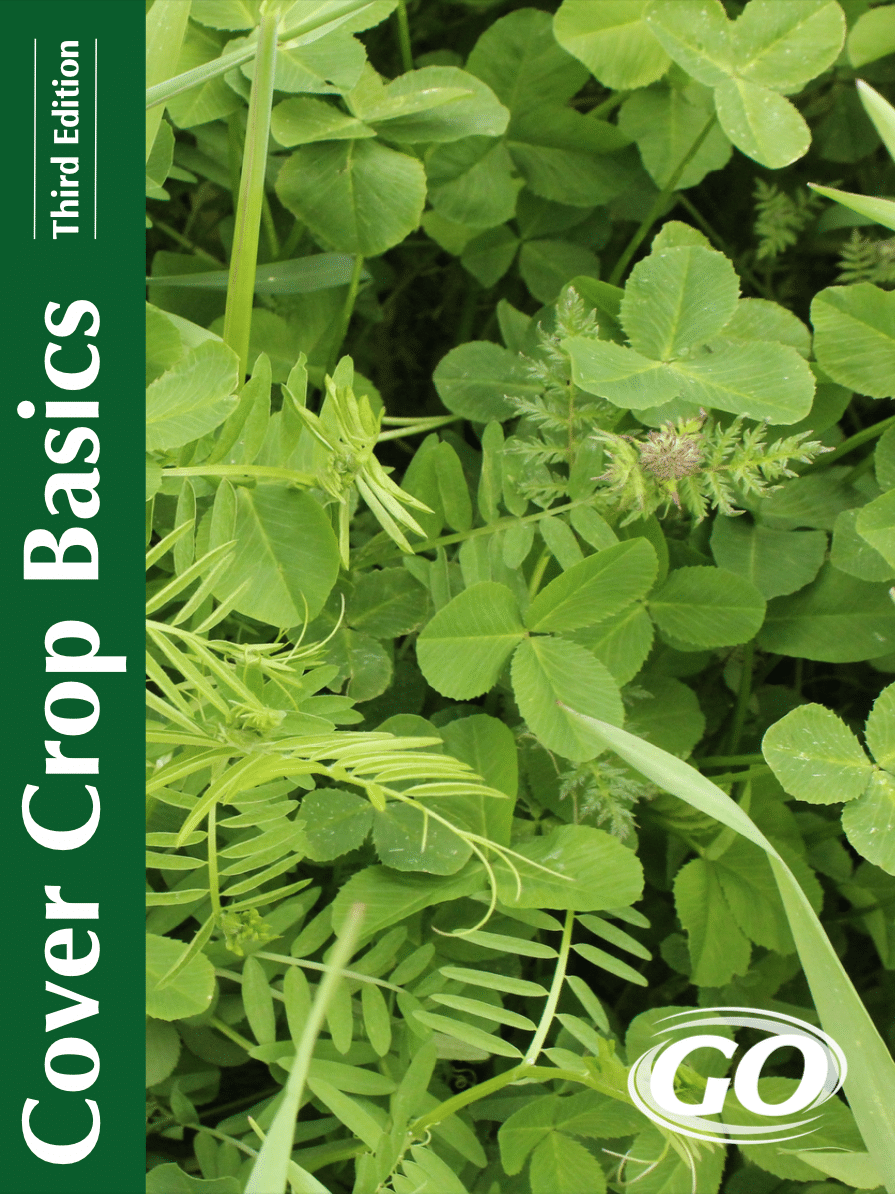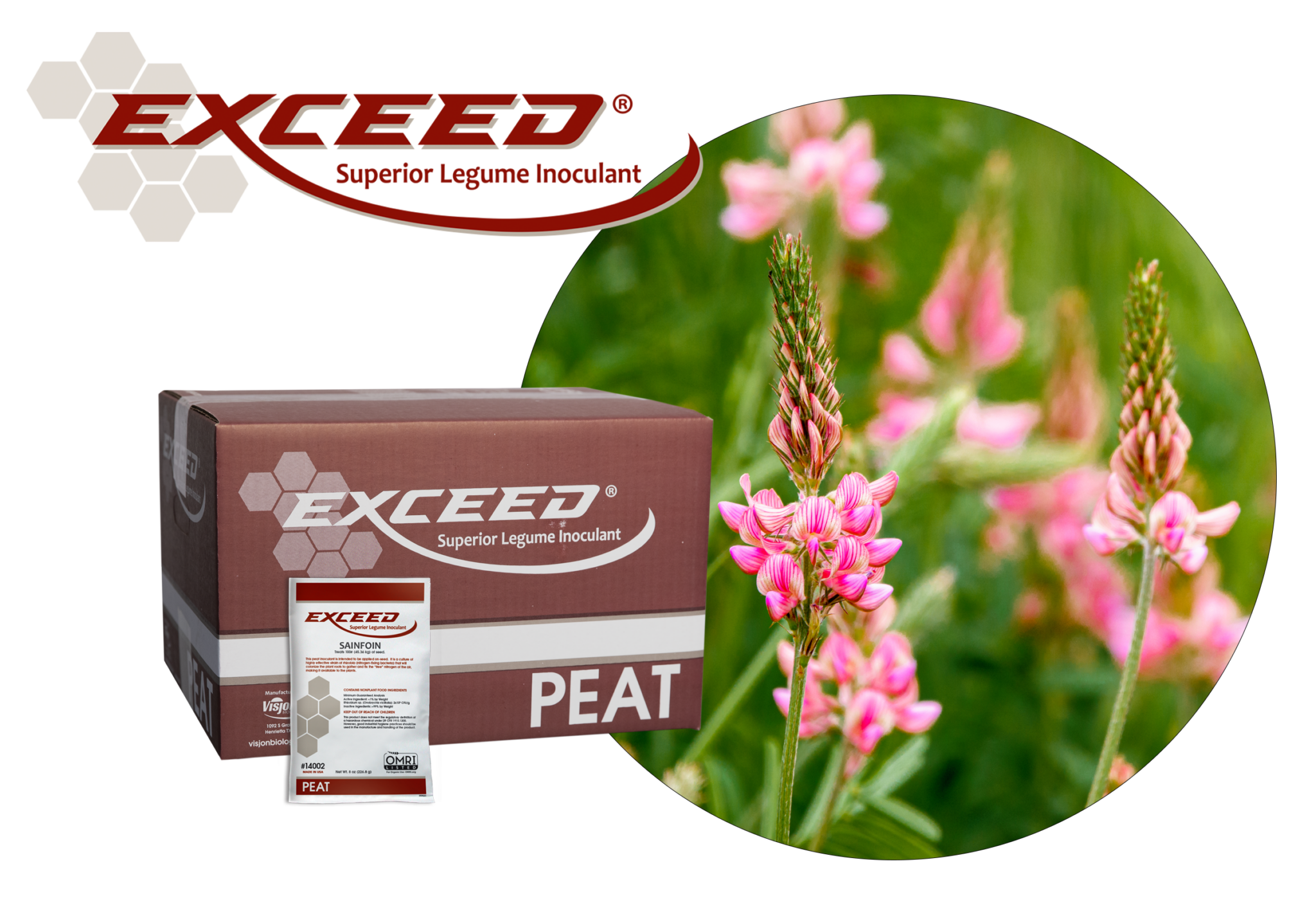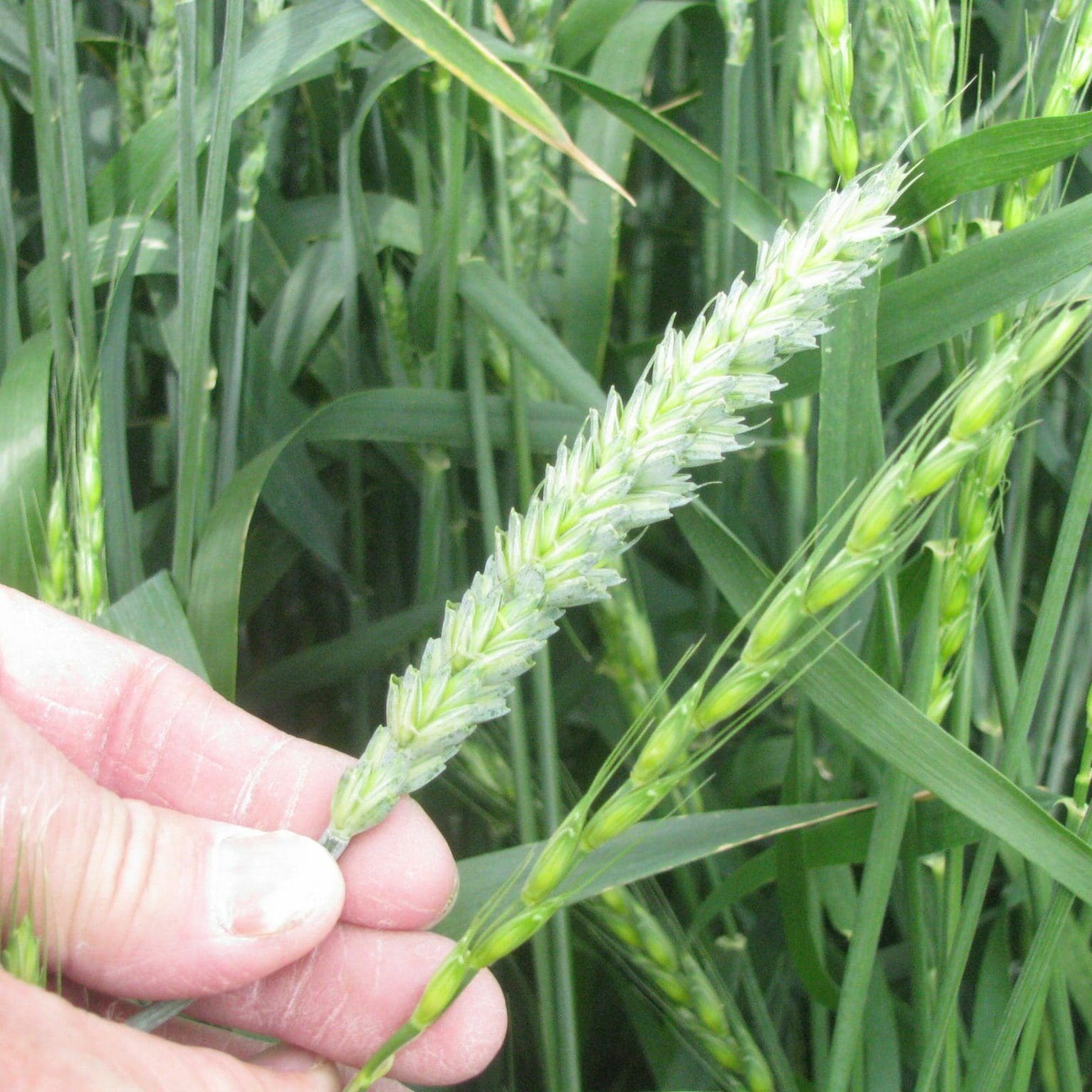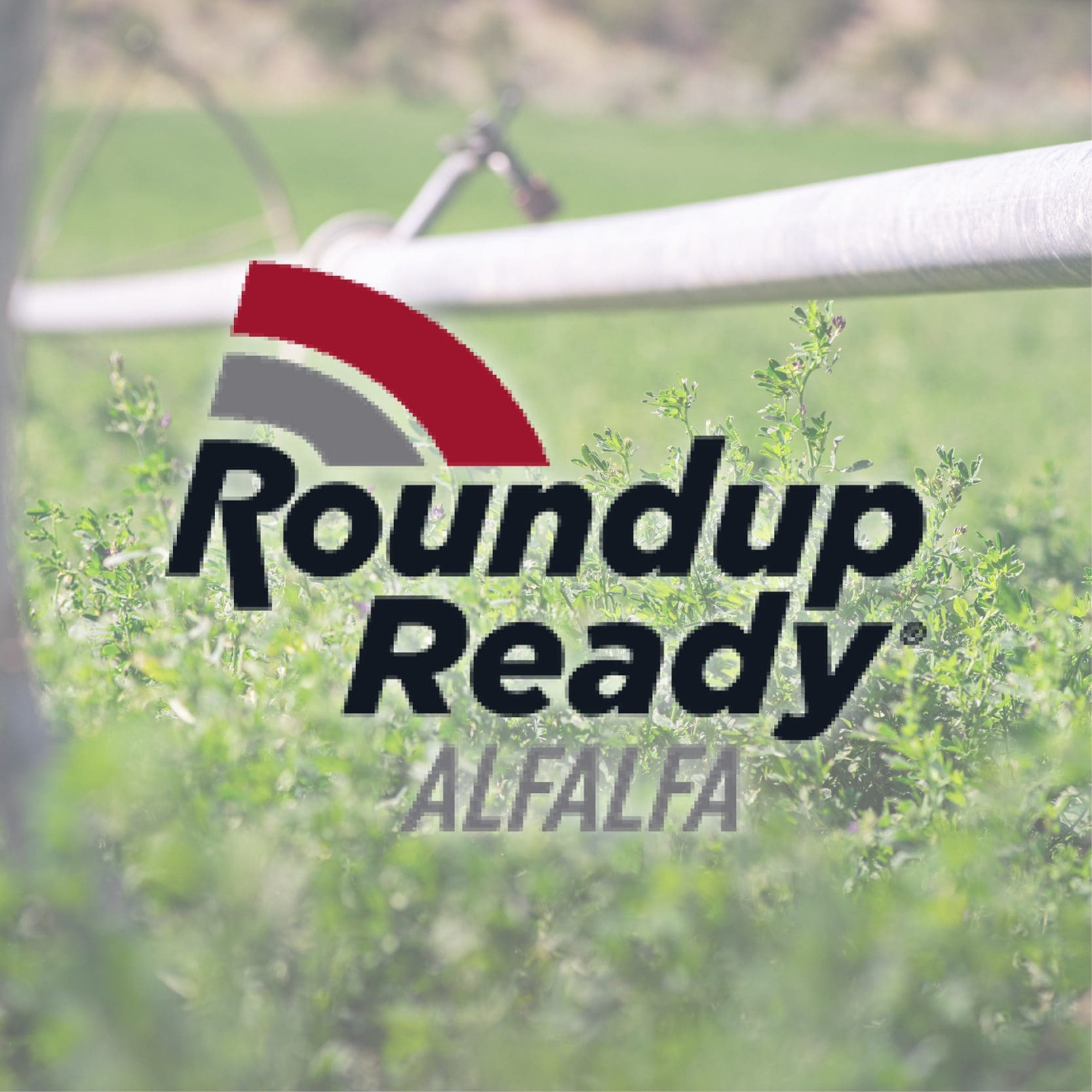Yellow Sweet Clover
- Scientific name: Melilotus officinalis
- AKA Yellow Blossom Sweet Clover
- Best used as a pasture and soil improving crop
- Rapid growth and easy establishment
- Excellent reclamation seed
- Extreme range of adaptation
Min. to Max. Annual Precipitation
72in.
Average Max. Height
Yellow Sweet Clover is a true biennial. May be used for hay, pasture, or as a plow-down crop. Its greatest use and adaptation is as a component is pasture mixes and soil improving crop. Frequently used as a component of drylands pasture mixes. It is very drought tolerant and is equally at home on roadside or in a pasture mix. Rapid growth and easy established make a popular choice for reclamation seedings.
Yellow Sweet Clover (Melilotus officinalis), also known as Yellow Blossom Sweet Clover, may be used for hay or pasture or as a plow-down crop. By far its greatest use and adaptation is as a component is pasture mixes and soil improving crop. It is frequently used as a component of drylands pasture mixes. It is very drought tolerant and is equally at home on a roadside or in a pasture mix.
Yellow Blossom Sweet Clover is a true biennial. It survives only one winter. It will reproduce from seed, but new plant establishment after initial planting is limited. Usually the second season spring growth is exceptionally heavy, and stocking rates need to be high so that new shoots are initiated and blooming is delayed. Once blooming occurs, the plant sets seed and dies.
Rapid growth and easy establishment make a popular choice for reclamation seedings. Additionally it works well in seed mixtures for road cuts, post-fire, mine spoils and other disturbed sites. It increases nitrogen in poor soils. The large taproot increases aeration and water absorption by opening the subsoil.
Yellow sweet clover has an extreme range of adaptation. It needs a high pH, generally 6.0 or higher. Sweet clover is able to obtain phosphorus from relatively unavailable soil phosphates and will grow on soils where alfalfa, red clover or ladino will fail. It tolerates very low fertility conditions and grows well on a wide range of soil conditions from claypan to sandy soils. It is also quite tolerant of wet conditions.
Sweet clover has great ability to grow and produce under dry conditions. It exceeds alfalfa in its ability to withstand drought and high temperatures. It also is more resistant to grasshoppers than most other legumes. Yellow blossomed sweet clover is considered more drought hardy than white blossomed. The variety Madrid is especially tolerant of dry conditions.
Yellow Sweet Clover provides food and cover to a variety of birds and mammals. The stems and leaves can make up a large portion of the diet of elk, deer and antelope. It is utilized by birds as cover and food. Sharp- tail grouse, greater prairie-chicken, gray partridge, ring- necked pheasants and many quail species eat the seed . It has been recommended to improve sage grouse habitat and for use in reducing post-burn soil erosion in green strips. It provides good nesting materials for ducks and good habitat for pheasants, grouse and other upland birds as well as bitterns and passerine species. Small mammals eat the seed and use the plants for cover and nesting.
Sweet clover is not as palatable as most other legumes because of its high coumarin content, but livestock soon get used to its taste and consume it readily. The coumarin content presents no animal health problems when used as pasture. There is less danger from bloat with sweet clover than with alfalfa, red clover or alsike, but some possibility does exist.
No other legume will provide as much grazing as sweet clover during the spring and summer of its second year. Animal performance is equal to that of alfalfa, and for a short period its carrying capacity is greater. The biggest problem during this period is to regulate animals so the clover is not grazed closely enough to harm new shoots yet is grazed closely enough to prevent it from flowering.
As a soil-improving crop, yellow sweet clover probably has no equal. It has a deep taproot system that penetrates the subsoil, produces a large amount of growth that can be quickly broken down and converted to organic matter and fixes high levels of nitrogen on heavy clay soils. Sweet clover is unexcelled as a legume used to improve nitrogen levels, especially at the end of the first growing season.
Sweet clover is a fine source of nectar and pollen for honey bees. Usually both yellow and white are used by beekeepers because yellow may bloom as much as two weeks before white, and a combination of the two extends the flowering season.
It is best to seed yellow sweet clover in the winter or early spring. Late summer or fall seedings tend to reach maturity, set seed and die by July of the following summer. This can reduce its total lifetime production by as much as 30 percent.
One of the most common ways to seed sweet clover is to overseed on fall-seeded small grain or at spring oats seeding time. Eight pounds of scarified seed per acre is usually sufficient to get a good stand of sweet clover. A cool season grass should also be seeded with it. A good mixture is 10 pounds of tall fescue (8 pounds PLS) plus 8 pounds of sweet clover (7 pounds PLS).
Sweet clover contains a high percentage of hard seeds that persist in the soil for many years. This accounts for its consistent volunteering in many areas.
***Click on the “Quick Plant Facts” tab above for more information.
Yellow Sweet Clover Fact Sheet
Yellow Sweet Clover Fact Sheet
Prepared by: US Forest Service
Cover Crop Basics
An informative, authoritative guide to cover crops. Very comprehensive, and covers all geographic regions of the USA. Published by GO Seed.
Who is Great Basin Seed?
Great Basin Seed is a seed company that specializes in seed sales and consultation for home, ranch, farm, range and reclamation. We have been a leader in the seed industry since 1974.
Our History
We've been in the seed business since 1974.
What We Offer
We offer seed for home, farm, ranch, range and reclamation projects.
Meet the Gang
We have the best employees in the world! We are proud of the work they do, and trust them to serve you!
Right: Company founder Lloyd and his wife Paula Stevens in a wildflower seed production field circa 1977
Helpful Links
Additional information about this product can be found on the academic websites linked below.
Synonyms
Plants can have many different common and scientific names. We've listed a few of them below.
- Yellow Sweet Clover
- Melilotus officinalis
- Yellow Blossom Sweet Clover
- Yellow Melilot
- Ribbed Melilot
Quick Plant Facts
| Common Name: | Yellow Sweet Clover |
|---|---|
| Scientific Name: | |
| Origin: | |
| Lifespan: | |
| Zone Map | comingsoon.gif |
| Min. Precipitation | 10-12 Inches |
| Sowing Rate | 10-15 PLS lbs. per Acre |
| Seed Count | 260000 |
| Elevation of Occurance: | |
| Growth Height: | |
| pH Tolerance: | |
| Plant Type: | |
| Root Form: | |
| Growth Season: | |
| Max Sowing Depth: | |
| Min. Precipitation: | |
| Planting Rate: | |
| Best Time to Sow: | |
| Sun & Shade Tolerance: | Full Sun |
| Hardiness Zones: |
